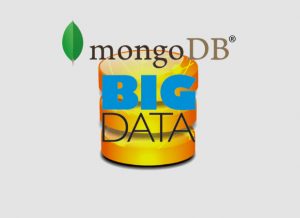 There was once a time when data was highly localized. There did exist many organizations that would deal with large quantities of data like telecom organizations, ticket reservation systems, etc. However, the number of such organizations was less, the quantity of data dealt with was nowhere near what is generated and maintained today and the data of different organizations were encapsulated within their own data centers. Those days, however, are over. Data is no longer treatable as individual silos but rather as one dynamic entity tapped into by different outfits according to their needs. This is the concept of Big Data. Big Data refers to data that is so vast, varied, and dynamic than conventional, discrete technology is not powerful enough to deal with it. Rather, a network of technologies and infrastructure must be deployed for efficient application of Big Data in the operations of various organizations.
There was once a time when data was highly localized. There did exist many organizations that would deal with large quantities of data like telecom organizations, ticket reservation systems, etc. However, the number of such organizations was less, the quantity of data dealt with was nowhere near what is generated and maintained today and the data of different organizations were encapsulated within their own data centers. Those days, however, are over. Data is no longer treatable as individual silos but rather as one dynamic entity tapped into by different outfits according to their needs. This is the concept of Big Data. Big Data refers to data that is so vast, varied, and dynamic than conventional, discrete technology is not powerful enough to deal with it. Rather, a network of technologies and infrastructure must be deployed for efficient application of Big Data in the operations of various organizations.
Why is NoSQL the Only Viable Solution for Big Data?
Big Data is characterized by three important attributes – Volume, Velocity, and Variety. All three of these have unimaginably large values for Big Data. Traditional SQL DBMSs are not built or equipped for handling Big Data. The rise of Big Data was a major impetus behind the introduction and rise of NoSQL systems. Here is how NoSQL systems deal with Big Data:
- Volume – With Big Data, even terabytes fall short. An estimate claims that there is something to the tune of 2.7 zettabytes of data in the world. That is equal to 1024 bytes of data, which is anything but a matter to be taken lightly. Even small clusters of data in this massive system would easily amount to terabytes or petabytes. NoSQL DBMSs are truly scalable due to horizontal scalability and are thus a perfect fit for such high-volume data.
- Velocity – The reason Big Data has gotten so “big” is that data is generated so rapidly and at millions of points at the same time. The tabular architecture of SQL is an ill fit for handling such data speeds. This is remedied by the hierarchical structure of SQL databases where all related data are always clubbed together instead of separately as in RDBMSs.
- Variety – The variety in the type and format of data has increased exponentially in recent times. Data types are no longer restricted to numbers, strings, and images. There is now audio, video, 3D data, dates, arrays, logs, expressions, codes, objects, and geospatial data, to name the simplest few. SQL DBMSs can only handle consistent data types that are highly structured. But today, most data generated is highly unstructured. And management of unstructured data is exactly what the function of NoSQL DBMSs is.
What Makes MongoDB the Best Solution for Big Data
MongoDB is a cloud-based, document-oriented NoSQL database management system. It is based on operational database technology and uses JSON. MongoDB was created, keeping in mind the requirements of Big Data. In fact, in recent years, it has come to dominate the database management sector by a significant margin, both in terms as a MongoDB development company and client percentages. The reasons why MongoDB has gained monumental popularity are:
- Scalability – One of the requirements of Big Data is seamless scaling as more data is added to the system. MongoDB, being a cloud-based NoSQL DBMS, is capable of horizontal scaling. This refers to increasing the capacity of data storage by simply adding a server rather than increasing the capacity of a server, which is called vertical scaling and employed by SQL databases. This not only provides infinite scaling capability but also makes it possible without any downtime or expensive infrastructural changes, which is profitable for both the client and the MongoDB development company.
- Scale-out Architecture – MongoDB has a native scale-out architecture, which is achieved through auto-sharding. Sharding refers to breaking up a chunk of data into sub-parts and distributing them linearly and evenly across multi-node clusters. This has two advantages. First, it helps in horizontal scaling in that you can just add another machine at the node without disrupting the rest of the cluster. Second, it reduces the latency period of responses as queries are auto-balanced across them and shard keys are used to identify the location of the data instead of scanning the entire database.
- Availability and Integrity – Availability of data is ensured by the creation and management of replicated sets of data. This means that the data is replicated and stored across multiple servers to make the data available from any terminal in any location. Moreover, data integrity is also ensured by this, as even if one client, host, or server goes down, the data will be safe and intact in another location, from where it can be restored and served.
- Modulated Consistency – In MongoDB, there is a JSON data validating tool that acts as a gatekeeper to ensure that only the right type of data gets stored in a field. This helps to preserve the integrity and consistency of the data. The level of consistency needed in the data can be easily modulated as the situation demands.
- Concurrency – The use of the WiredTiger storage engine by MongoDB allows document-concurrency, which in turn helps it handle operational workloads with ease. Operational capabilities are marked by real-time, dynamic, and concurrent interactivity with low response time, acting on data that is limited highly by stringent criteria. Dynamic querying is responsible for lending real-time manipulation and interactivity.
- Dynamic Database – The high velocity of Big Data can be managed only if the DBMS is dynamic. This is achieved by not just reducing response time but also minimizing queries. While the former is achieved through auto-sharding, the latter is achieved through data embedding or extending the hierarchy of the data by adding more fields within one. This creates a single path for a query to follow, instead of separate queries for separate tables as in an SQL database.
Where MongoDB Works
Certain sectors can especially benefit from the use of MongoDB. If you look into the client base of any MongoDB development company, you will notice mostly financial organizations, data security firms, e-commerce, and digital marketing concerns, government outfits, and IoT. The necessities of these fit with the features of MongoDB. As far as potential markets go for MongoDB development services, India is a great candidate, with its massive population and rapidly growing digital customer base. In fact, MongoDB development services in India may well have surpassed rivals like Oracle and Hadoop and shows no signs of going down.













